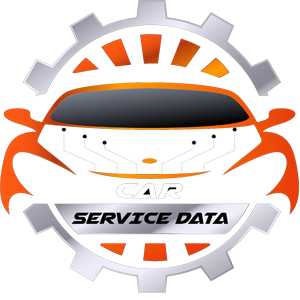What Does TC Mean On A Car?
When you own a car, you’ll notice a lot of acronyms that you don’t understand. One of the most common acronyms you’ll come across is TC.
What does TC mean for cars and is it important?
In this article, we’ll explain what TC means and how it works. Also look for signs that there may be some problem with your traction control system.
What does TC mean in cars?
TC stands for Automotive Traction Control. It is a vehicle system that helps you accelerate while preventing wheel spin and skidding when driving on low-grip surfaces. It is a valuable safety system found on most modern vehicles. Traction control is designed to ensure a smooth ride in all conditions.
It helps balance stability and acceleration, even on slippery surfaces, such as after a rain shower. If one of the wheels spins faster than the others, the traction control system uses speed sensors to detect the error. The car automatically adjusts its speed to match the spinning wheel, restoring grip on the road.
The ECU can also reduce engine torque and activate the ABS when you need to brake. In some cases, the traction control light on your dashboard will come on to warn you of a skid. If the light goes off immediately, there’s nothing wrong with the system. However, if the light stays on, there may be a fault somewhere in the system.
When should I use the traction control light?
You can leave the traction control system on all the time, even when the road is clear. It starts automatically when you start your car, so you don’t have to do anything to turn it on. You can turn it off manually, but there are some special situations where you should make sure it’s on.
You should turn on traction control if you encounter bad weather such as ice, snow, or heavy rain. You’ll need the extra support when driving on wet or slippery surfaces.
It’s also helpful when driving on winding or windy roads. You don’t want to lose traction while cornering, which is especially important when the road is wet or muddy.
When should traction control be turned off?
Your traction control system should be active most of the time while driving. However, there are rare occasions when it’s best to turn it off. For example, if your car gets stuck in snow, sand, or mud, you may need to turn off the engine. Traction control can make it more difficult to get out of these wheel-spinning situations.
In these situations, your wheels need to spin and dig into the ice, sand, mud, or snow so they can find solid ground. Once they reach this ground, traction is restored and you can pull your vehicle out.
Plus, if you plan on racing or drifting your vehicle, traction control is your enemy. Instead, you want the wheels to spin just right to ensure maximum coolness.
Traction control vs. stability control
Traction control may be better known than stability control, but it’s also a safety feature. They work together to ensure a safer ride. Plus, both systems use wheel speed sensors to get the information they need. Stability control aims to help your vehicle remain stable and move in the direction you want it to.
It is a complex system that controls the movement of the vehicle. Additional sensors around the vehicle are used along with the speed sensor to detect the vehicle’s movement compared to its direction. If the two directions don’t match, the system helps to stabilize the movement.
Similar to traction control, it can automatically brake wheels that are moving too fast. This system is mandatory for all vehicles sold since 2012.
Why does the traction control warning light come on?
1. Poor road conditions
If you come into contact with a slippery patch of road, the TC light may come on briefly. This warning light indicates that the traction control system has been activated. However, the light should go off when traction is regained. If it doesn’t, you have a bigger problem.
2. Faulty Wheel Speed Sensors
Wheel sensors are needed to detect the speed of each individual wheel. Each of these sensors is connected to the ECU, which keeps the traction control system up to date. If one of the sensors is defective, it will not send an accurate signal to the ECU. This failure will cause the traction control light to come on until you replace the faulty wheel speed sensor.
The cost to replace a wheel speed sensor should be around $325-400. Labor should be around $75-100 and parts should cost around $250-300.
3. Faulty steering angle sensor
The traction control system closely monitors the angle of your steering wheel. The sensor also reports how fast the steering wheel is turning while you’re driving. If there’s a problem with this sensor, it will need to be replaced.
The traction control light will come on when the sensor fails. If you want to replace it yourself, it’s located inside the steering column. The cost to replace a steering angle sensor can range from $125 to $500. Labor costs range from $75 to $250, and the sensor itself costs $50 to $250.
4. ABS Failure
The anti-lock braking system works in conjunction with the traction control system. These parts use many of the same sensors and components. So if your ABS is faulty, the traction control light will likely come on as well. To determine the cause, use a code scanner to find out which part is at fault.

